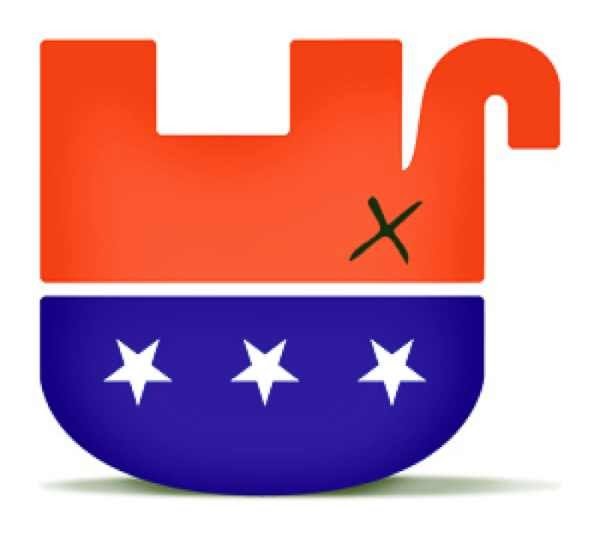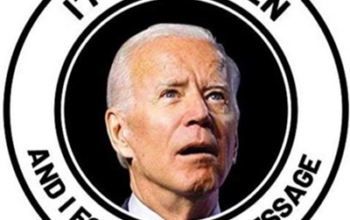One third of the stores in downtown San Fran, per the city, are empty. In fact, it is closer to 50%. Need more evidence that San Fran is in a Doom Loop? It grew population by about 1200 in the last year—but that was because the incoming illegal aliens out numbered the productive people leaving.
“Corners that had shops ten years ago according to Google Streetmap views were empty. Empty store fronts given the telltale signs of being painted over with artwork or having bi displays inside stretched for as much as a block. There were some signs of typical San Francisco. Ghirardelli’s, See’s, and even places selling the famous sourdough bread were doing alive and very well. Surprisingly, cosmetics stores were also in abundance, often next to a cafe or coffee shop. So it wasn’t dead.
Turning into Union Square, with more higher end stores, it was oddly the same. Some prominent places touching the square itself or the inexplicable Dyson showroom were empty, and the frequency increased in the streets leading away back to Market. While more empty storefronts were seen, the counting of them by this point seemed futile. It was like a baseball game where the score was 16-0 in the third inning. There was just so much that adding anymore on was going to be pointless and you wondered why the mercy rule wasn’t put into effect yet.
The politicians are lying so they can pretend it is not as bad as it is. If they told the truth even more would move out. As it is as leases come up, businesses close and move out of town. San Fran is for the very rich, the very poor, the illegal alien and the homeless—with crooks and drug dealers owning the streets.
The Empty Storefronts of Downtown San Francisco
San Francisco vacancy ‘is probably worse than 37% right now’
By Evan Symon, California Globe, 3/30/24 https://californiaglobe.com/fl/the-empty-storefronts-of-downtown-san-francisco/
Whenever an article on companies leaving San Francisco or more reports on office vacancies in the city come out, there will always be a few e-mails saying that it isn’t actually that bad. That empty storefronts aren’t abundant. A lot of residents in San Francisco just want to keep charging ahead with the narrative that all is ok in San Francisco. At least for retail. A common comeback seems to be “If you were here, you would think differently.”
Ok – Let’s test that. On Friday, amidst a downpour, the Globe decided to go from the Ferry Terminal in the Embarcadero down the city’s main economic corridor, Market Street, curve in to Union Square, before curving back onto Market Street and end at City Hall. This way, tourist areas and business areas can passed through, as well as major stops on BART and Muni lines, both of which usually bring in a lot more foot traffic to areas.
As noted with an article about retail businesses in Oakland from earlier in the week, the discrepancy between San Francisco’s commercial and retail vacancies is wide. Latest figures of office vacancy in San Francisco are at about 37%, with only 6% being reported for retail vacancy. The same factors affect both in the current market: Economic uncertainty, high inflation, rising insurance costs, more people working from home, the rise of AI and automation, the continued rise of e-commerce, the rising crime rate, high rental costs, and businesses still adjusting to a post-COVID climate.
And, as the Globe found out with Oakland, retail vacancy rates really make it hard to pin down what vacancies are, as the rates generally only pick up on a narrowly defined term over a long period of time, while a more variable model found in malls and other retail areas usually goes month to month. So while Oakland claims a 7% retail vacancy rate based on longer term trends, in the here and now, real estate experts told the Globe it about matches the office vacancy rate of 20%. And when the Globe looked at the situation first hand, the latter held out. So the question is, would San Francisco follow suit, or were those people defending the city and the 6% rate be right?
“Oh, it’s probably worse than 37% right now,” said Angie Reese, a commercial real estate monitor in a Globe interview. “That 6% is a lie. They can’t even claim a district has that much. Not even Pacific Heights. For a main thoroughfare like Market street with high rental prices, lowered foot traffic because of fewer people working downtown, and all those reports of drug users and criminals there, 37% is generous.”
Walking down Market proved her right. While restaurants and coffee houses were there and getting decent business, empty storefronts dotted the street. Oftentimes they were in surprising places. Some vacancies were right across the street from the tourist hub of the ferry terminal. Others were in prominent buildings like the Palace Hotel. Even more, some were for long stretches. The most empty storefronts in a row counted was 5, but in one two block stretch on market, it was 7 out of 8.
Corners that had shops ten years ago according to Google Streetmap views were empty. Empty store fronts given the telltale signs of being painted over with artwork or having bi displays inside stretched for as much as a block. There were some signs of typical San Francisco. Ghirardelli’s, See’s, and even places selling the famous sourdough bread were doing alive and very well. Surprisingly, cosmetics stores were also in abundance, often next to a cafe or coffee shop. So it wasn’t dead.
Turning into Union Square, with more higher end stores, it was oddly the same. Some prominent places touching the square itself or the inexplicable Dyson showroom were empty, and the frequency increased in the streets leading away back to Market. While more empty storefronts were seen, the counting of them by this point seemed futile. It was like a baseball game where the score was 16-0 in the third inning. There was just so much that adding anymore on was going to be pointless and you wondered why the mercy rule wasn’t put into effect yet.
Finally at City Hall, well within view of many other empty storefronts, there was a rough tally, and the retail-commercial vacancy model of correlation won out. That 6% was a pipe dream, with retail being as bad as commercial.
“There’s a lot of reasons for it like you mentioned,” added Reese. But that’s just how it is in San Francisco. We’re seeing this everywhere, but not to the extent of San Francisco. And as you saw, there is a big difference between Main Street and Market Street.”
Updated Bay Area office and retail vacancy figures for Q2 are due to start coming in sometime in June.



